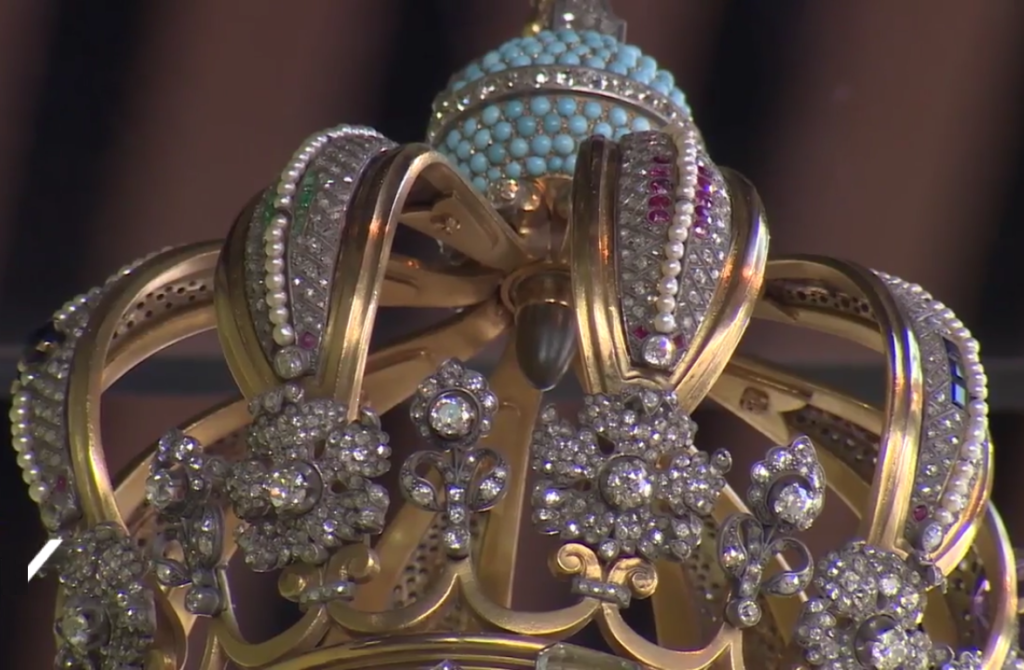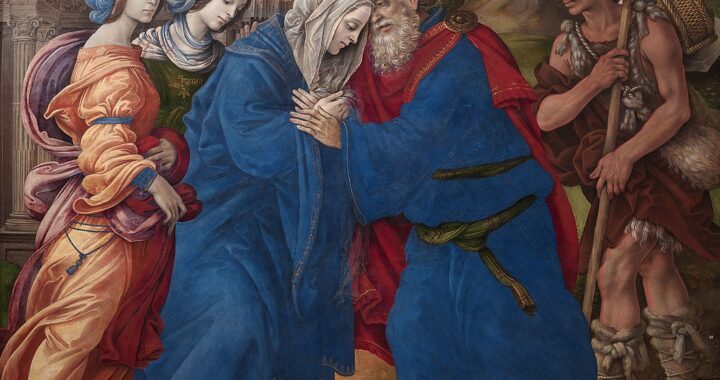
All images from Wikimedia Commons
In the year 1917, near the end of World War I, three Portuguese children claimed to have seen and heard the Blessed Mother. After the local bishop investigated the children’s statements, examined the messages they were given, and analyzed the descriptions provided by other witnesses, he declared the events worth of belief and permitted public devotions under the title of Our Lady of Fátima.
As is the case for all private revelations, Catholics are not obligated to practice this devotion or accept as true any or all its events. But there are many fascinating details about this story, details that raise interesting questions.
For example, the apparitions began when most of the world was still focused on World War I. The apparitions of the Blessed Virgin Mary seem to have been timed to warn Christians about the unnoticed threat of the communist takeover of Russia and encourage Catholics to start praying for an end to this brutal and deadly regime. But how could anyone predict such a thing would happen before it even began?

That’s why it’s hard to ignore what happened at Fátima.
As a reminder, the apparitions of the Blessed Mother to the three children at Fátima began on May 13, 1917, and ended on October 13, 1917. Although only the three children were present for the first apparition, the crowds increased in size each month. During the last event, somewhere between 30,000 and 100,000 witnesses—including many skeptics—were present. Many people reported seeing a terrifying vision. As the three children were praying (and seeing a vision of the Holy Family), the crowds appeared to see the sun plummet toward the earth—toward them! Many believed it was the end of the world. But the sun rapidly returned to its proper place, and the vision ended. Then the rain clouds parted and, despite the fact that it had been raining heavily, the witnesses’ clothes and the surrounding ground were mysteriously dry.

As the children were interviewed, investigators discovered that their visions did not actually start in 1917. The children said that they had also been visited by an angel a year earlier. The angel had told them that he was the “Angel of Peace”, and he taught them how to pray, apparently preparing them for the future visit of the Blessed Virgin Mary.
During each of the apparitions, the children prayed the rosary with the Mother of God, who they said was incredibly beautiful and seemed to hover over a holm oak tree. Mary told them that God wanted to establish a devotion to her Immaculate Heart. She also showed them a terrifying vision of Hell and told them a secret which was not revealed until the year 2000.
The children were kidnapped by the local mayor to prevent them from going to the site of the apparitions on August 13. Although the mayor’s cowardly act was perpetrated against mere children—and didn’t stop Mary from appearing later—it did serve one useful purpose. It proved that the children were telling the truth. All three were threatened with death and put in prison cells, yet they refused to recant their story.

The effect of these visions on the devotion of the three young visionaries is unquestionable. Although Francesco and Jacinta Marto died a few years later from the Spanish flu, other people immediately noticed that the children had become more devoted to prayer and that they daily tried to make personal sacrifices for the sake of sinners. They are now canonized saints. Their cousin, Lúcia dos Santos, became a Carmelite nun, lived a long and blameless life, and died in 2005. None of them ever retracted their explanations of these events.
But Fátima changed the world, not just three people in Portugal.
The message given by Mary at Fátima was not a theological treatise. The Blessed Mother simply encouraged the children to pray the rosary. She also asked for the entire world to be consecrated to her Immaculate Heart. The vision of Hell that the children had seen was frightening, but it conveyed to them the seriousness of sin and the pain of eternal separation from God. Catholics all over the world were moved by the words and example of the children and responded with a renewed dedication to praying the rosary and offering up their sacrifices.

In addition to the worldwide consecration, the Blessed Mother asked Catholics to receive Holy Communion on the first Saturday of the month for five months as a means of reparation. Why? As communism took control of Russia, churches were desecrated and closed, clergy and religious were killed, and the faithful were ordered to abandon their faith. Out of all the nations of the world, the Blessed Mother particularly mentioned Russia. She warned that if people failed to pray and offer reparations for these offenses against God, Russia’s “errors” (i.e., communism) would spread all over the world, leading to wars, martyrdoms, deaths, and the persecution of Christians. She also said that the pope would suffer greatly.

Decades later, Saint Pope John Paul II demonstrated that he believed in the veracity of these messages. The secret that was kept until the year 2000—sometimes called the Third Secret since the other two were revealed earlier—involved another vision. In this vision, an assassination attempt was made on a “man in white”, that is, the pope. After Pope John Paul was shot by a gunman in St. Peter’s Square in 1981, he recognized that the assassination attempt was predicted by the Fátima visions, and he believed that the Mother of God had saved his life. He had the bullet that nearly killed him placed in the crown of the Our Lady of Fátima’s statue in Portugal. And he consecrated the entire world to the Immaculate Heart of Mary on March 25, 1984.
But the Fátima apparitions blessed the world in yet one more way. While we human beings could not know in 1917 that the bloodiest century in the history of the world was upon us—a hundred years of world wars, civil wars, concentration camps, atomic bombs, and innumerable Christian martyrdoms—God did know. In His great love for us, He warned us of the imminent danger, gave us hope, and reminded us to pray and make sacrifices. He did all of this through apparitions of the gentle, humble Mother of God, who always leads us back to Jesus Christ, and, like a true mother, gives us hope when things seem hopeless.
